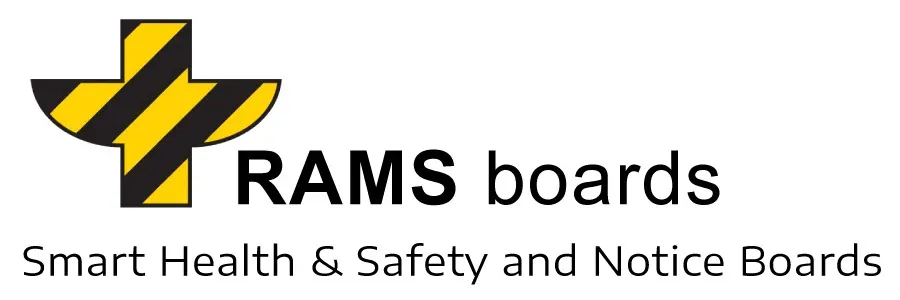RAMS boards significantly contribute to the continuous improvement of workplace safety, especially in the dynamic environment of construction sites. Their role as multifunctional safety tools offers various avenues through which they enhance and evolve safety practices over time.
- Centralized and Updatable Safety Communication: RAMS boards provide a central location for disseminating safety information. This centralized approach ensures that all workers have access to the latest safety guidelines, protocols, and updates. Because the information on these boards can be easily updated, they facilitate the communication of the most current safety practices and regulatory changes, ensuring continuous improvement in safety awareness.
- Visibility and Engagement: The design and placement of RAMS boards make them highly visible and engaging. This visibility ensures that safety messages are constantly in view, keeping safety at the forefront of workers’ minds. Regular engagement with the boards helps reinforce safety practices and encourages a culture of safety awareness and vigilance.
- Customization for Specific Needs: RAMS boards are adaptable to the specific safety requirements of a construction site. They can be tailored to highlight particular risks or to provide information relevant to specific stages of a construction project. This flexibility allows for the continuous adaptation of safety communication to the evolving needs of the site, leading to ongoing improvements in safety practices.
- Facilitating Safety Audits and Feedback: RAMS boards can be used as a platform for conducting safety audits and gathering feedback from workers. By displaying safety performance metrics or providing space for workers to share their observations and suggestions, these boards become a tool for identifying areas of improvement and implementing corrective actions.
- Promoting a Proactive Safety Culture: The presence of RAMS boards, especially when they are regularly updated and actively used, promotes a proactive approach to safety. They serve as a constant reminder for workers and management to continually assess and improve safety measures, fostering a culture where safety is not just a regulation but a continuous commitment.
- Integration with Safety Initiatives: RAMS boards can be integrated with broader safety initiatives and programs within an organization. They can display information about ongoing safety training, upcoming safety drills, or new safety technologies being implemented, ensuring that the entire workforce is informed and involved in these initiatives.
- Durability and Reliability: Constructed to be durable and weather-resistant, RAMS boards ensure that safety information is always accessible, even in harsh working conditions. This reliability is crucial for maintaining consistent safety communication, which is a key component of continuous improvement.
- Support for Compliance and Best Practices: By providing a platform to display regulatory information and best practices, RAMS boards assist in maintaining compliance with safety laws and standards. This compliance is not static; as standards evolve, the boards can be updated to reflect the latest in safety regulations and industry best practices.
In conclusion, RAMS boards support continuous improvement in workplace safety by offering a centralized, updatable, and engaging platform for safety communication, being customizable to specific site needs, facilitating safety audits and feedback, promoting a proactive safety culture, integrating with safety initiatives, and supporting compliance with evolving safety standards. Through these functions, they play a vital role in fostering an environment of ongoing safety enhancement and vigilance on construction sites.
